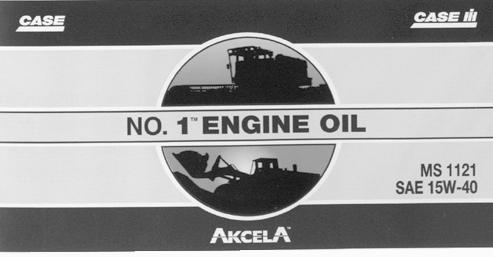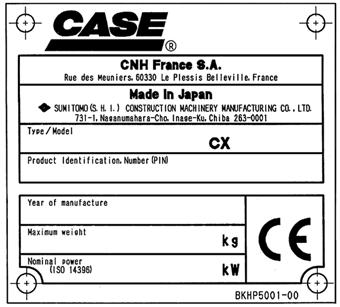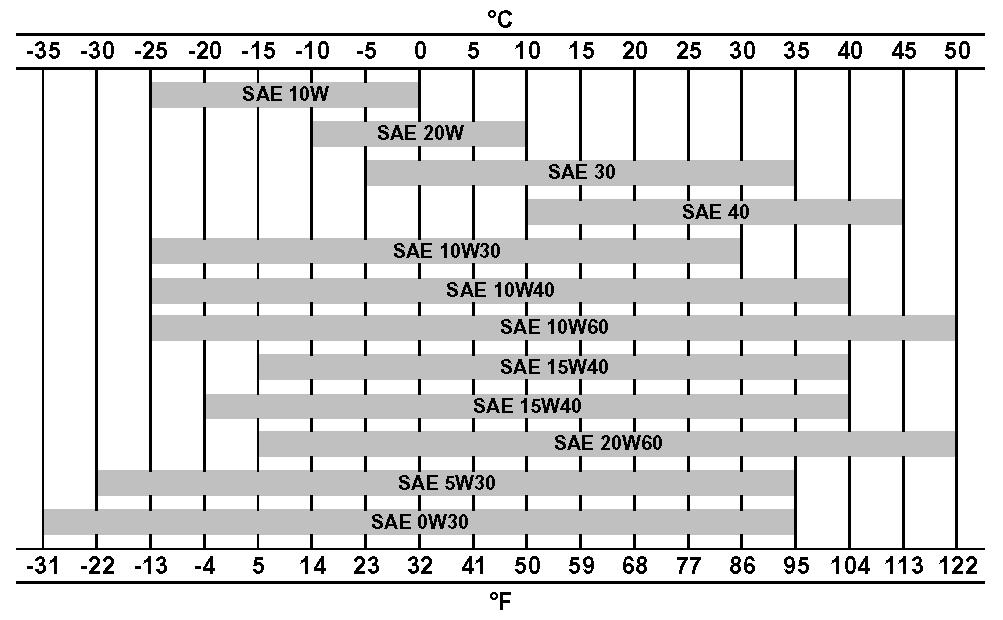
9 minute read
STANDARD TORQUE DATA FOR CAP SCREWS AND NUTS
Tightening of cap screws, nuts
Tighten alternately so that tightening torque can be applied evenly. The numbers in the figure below indicate the order of tightening.
Advertisement
Cap screws which have had Loctite used (white residue remains after removal) should be cleaned with loght oil or suitable cleaning solvent and dried. Apply 2-3 drops of Loctite to the thread portion of the cap screw and then tighten.
Torque table
Tighten cap screws and nuts according to the table below if there are no other special instructions.
Cap Screw Name Size (Size)
Section 1002
Specifications
Andspecialtorquesettings
Table Of Contents
WARNING: This symbol is used in this manual to indicate important safety messages. Whenever you see this symbol, carefully read the message which follows. Your safety depends on it.
TYPE, SERIAL NUMBER ANDYEAR OFMANUFACTUREOF THEMACHINE
For all part orders, request for information or assistance, always specify the type and the serial number of the machine to your Case dealer.

Fill in the following lines with the required information: Type, serial number, year of manufacture of the machine and the serial numbers of the hydraulic and mechanical components.
(2)
Fluids And Lubricants
Lubricants must have the correct properties for each application.
WARNING: The conditions of use for individual fluids and lubricants must be respected.
Hydraulic fluid
CASE/AKCELA hydraulic fluid is specially designed for high pressure applications and for the CASE hydraulic system. The type of fluid to be used depends on the ambient temperature.
Temperate climates: -20°C to +40°C (-4° to 104° F)
CASE/AKCELA: HYDRAULIC EXCAVATOR FLUID (MS 1230. ISO VG 46. DIN 51524 PART 2 HV)
Hot climates: 0°C to +50°C (32° to 122° F)
CASE/AKCELA: AW HYDRAULIC FLUID 68 HV (MS 1216. ISO VG 68. DIN 51524 PART 3 CATEGORY HVLP)
Cold climates: -25°C to +20°C (-13° to 68° F)
CASE/AKCELA: AW HYDRAULIC FLUID 32 (MS 1216. ISO VG 32. DIN 51524 PART 2)
Biodegradable fluid: -30°C to +40°C (-22° to 104° F)
This yellow-colored fluid is miscible with stan dard fluid. If used to change standard fluid, it is advised to drain the circuit completely before refilling with this fluid.
CASE/AKCELA: HYDRAULIC EXCAVATOR FLUID BIO (MS 1230. ISO VG 46. DIN 51524 PART 2 HV)
Transmission component oil
Extreme pressure oil used for enclosed transmission components.
CASE/AKCELA: GEAR 135H EP (SAE 80W-90. API GL 5. MIL-L-2105 D. MS 1316. ZFTE-ML 05A)
Grease
CASE/AKCELA: MOLY GREASE 251H EP-M (251H EP-M NLGI 2)
"Extreme Pressure" multipurpose grease with lithium soap and molybdenum disulphide.
CASE/AKCELA: MULTIPURPOSE GREASE 251H EP (251H EP. NLGI 2)
"Extreme Pressure" multipurpose grease with lithium soap and calcium.
CASE/AKCELA: PREMIUM GREASE EP2 (NLGI 2)
"Extreme Pressure" multipurpose grease with lithium soap.
Hydraulic breakers
CASE/AKCELA: MULTIPURPOSE GREASE 251H EP (NLGI 2).
Engine Oil
THE CASE/AKCELA No.1 engine oil is recommended for your engine. This oil ensures proper lubrication of your engine for all operating conditions.
If the CASE/AKCELA Multigrade "No. 1 ENGINE OIL" cannot be obtained, use the oil corresponding to one of the following categories: ACEA E7. API CI-4.
Oil viscosity / Oil range

Engine fuel, maintenance of fuel filters and fuel storage
In order to meet the emission control regulation of 3rd-stage, the engine components have been made precisely and they are to be used under high-pressure conditions.
Therefore, the specified fuel must be used for the engine.
As a matter of course, not only the guar antee will not be given for the use of a fu el other than the sp ecified but also it may invite a serious breakdown.
In addition, since suitable specifications for the fuel filter elements have been established for this engine, use of the genuine filter is essential.
The following describes the specifications and the requirements of the fuel to be applied, and maintenance of the fuel and the fuel elements.
Fuel to be applied
Selection of fuel
Following conditions must be met for the diesel engines, that is the one;
1In which no dust even fine one is mixed,
2With proper viscosity,
3With high cetane rating,
4With good flow properties in lower temperature,
5With not much sulfur content, and
6With less content of carbon residue
Applicable standards for diesel fuel
Applicable StandardRecommendation
JIS (Japanese Industrial Standard)NO.2
DIN (Deutsche Industrie Normen)
SAE (Society of Automotive Engineers)
Based on SAE-J-313C
BS (British Standard)
Based on BS/2869-197
EN590
DIN 51601
NO. 2-D
Class A-1
If a standard applied to the fuel for the diesel engine is stipulated in your country, check the standard for details.
Requirements for diesel fuel
Although conditions required for the diesel fuel are illustrated above, there are other requirements exerting a big influence on its service durability and service life.
Be sure to observe the following requirements for selecting fuel.
Sulfur content..............................................................................2500 ppm or less
HFRR*.........................................................................................460 mm or less
Water content..............................................................................0.05 wt% or less
* HFRR (High-Frequency Reciprocating Rig.): An index showing lubricating properties of the fuel.
Sulfur content reacts to moisture to change into sulfuric acid after combustion.
Use of a fuel containing much sulfur content allows it to accelerate internal corrosion and wear.
In addition, much sulfur content quickens deterioration of engine oil allowing its cleaning dispersive property to be worse which results in acceleration of wear of sliding portions.
HFRR is an index that indicates lubricating property of a fuel.
Large value of the index means poor lubrication so that seizure of the machine components may result if such a fuel is used.
Since a fuel with high HFRR value also has lower viscosity, it can easily be leaked out.
If the fuel is mixed with the engine oil, the oil is diluted to deteriorate its lubricating property resulting in acceleration of wear.
Water content allows inside of the fuel tank to rust which in turn blocking the fuel line and the fuel filter.
IMPORTANT : In cold weather, fill the fuel tank at the end of the day's work, in order to prevent the formation of condensation.
This may also cause wear and seizure of the machine components.
If atmospheric temperature goes below the freezing point, moisture content in the fuel forms fine particle of ice allowing the fuel line to be clogged.
IMPORTANT : Obtain table of analysis for the fuel you are using from the fuel supplier to confirm that it meets the criteria described above.
IMPORTANT : If a fuel which does not meet the specifications and the requirements for the diesel engine, function and performance of the engine will not be delivered. In addition, never use such a fuel because a breakdown of the engine or an accident may be invited.
Guarantee will not be given to a breakdown caused by the use of a improper fuel.
Some fuels are used with engine oil or additives mixed together with diesel engine fuel.
In this case, do not use these fuels because damage to the engine may result as the fuel has been contaminated. It is natural that the emission control regulation of 3rd-stage will not be cleared in case where a fuel that does not meet the specifications and the requirements is used.
Use the specified fuel for compliance of the exhaust gas control.
IMPORTANT : It you use diesel fuel which contains much sulfur content more than 2500 ppm, be sure to fol- low the items below for the engine oil selection and maintenance of engine parts. Guarantee will not be given to breakdowns caused by not to follow these items.
1Selection of engine oil
Use API grade CF-4 or JASO grade DH-1.
2Exchange the engine oil and engine oil filter element by the periodical interval reported on the Operator’s Manual.
3Inspect and exchange the EGR (*)parts and fuel injector parts of engine every 3000 hour of use.
* EGR: Exhaust Gas Recircultion
Maintenance of fuel filters
Be sure to use the genuine fuel filters.
The fuel injection system is precisely constructed and the genuine filter employs finer mesh than conventional filters to improve protection of machine equipment.
If a filter with coarse mesh is used, foreign object passing through the filter enters into the engine so that machine equipment can wear out in a short period of time.
IMPORTANT : If a fuel filter other than the genuine filter is used, guaranty will not be applied to a fault caused by the use of a wrong filter.
Two kinds of fuel filter, the pre-filter and the main filter, are mounted on the machine. Be sure to use the genuine fuel filters and replace them at the periodic intervals reported on the operator’s Manual.
IMPORTANT : Since the pre-filter also has a function of water separation, discharge water and sediment when the float reaches lower part of the filter elements. CHECK EVERY DAY before to start the engine.
Time to replace filters may be advanced according to properties of the fuel being supplied.
• Therefore, take measures to prevent dust or water from being entered in the fuel tank when sup- plying fuel.
• When supplying fuel directly from a fuel drum can, leave the drum as it stands for a long period of time to supply clean fuel standing above a precipitate.
• If it is hard to leave the drum for a long period of time, install a fuel strainer and a water separator before the fuel tank of the machine to supply clean fuel.
Water drain cock is provided on the bottom side of the fuel tank.
• Drain water before starting the engine every morning.
• In addition, remove the cover under the tank once a year to clean up inside of the tank.
Fuel storage
Long storage can lead to the accumulation of impurities and condensation in the fuel. Engine trouble can often be traced to the presence of water in the fuel.
The storage tank must be placed outside and the temperature of the fuel should be kept as low as possible. Drain off water and impurities regularly.
Anti-freeze/Anti-corrosion
Use anti-freeze in all seasons to protect the cooling system from corrosion and all risk of freezing.
CASE/AKCELA: PREMIUM ANTI-FREEZE (MS 1710)
For areas where the temperature goes down to -38°C (-36.4°F), mix 50/50 with water.
IMPORTANT : Do not mix products of a different origin or brand. The same product must be used when topping up the system.
Environment
Before carrying out any maintenance operation on this machine and before disposing of used fluids or lubricants, always think of the environment. Never throw oil or fluid on the ground and never place it in leaking receptacles. Contact your local ecological recycling centre or your CASE Dealer to obtain information on the correct method of disposing of these lubricants.
Plastic and resin parts
When cleaning plastic parts, the console, the instrument panel, the indicators etc... avoid using petrol, kerosene, paint solvents etc... Use only water, soap and a soft cloth.
The use of petrol, kerosene, paint solvents etc... causes discoloration, cracks or deformation of these parts.
Main body dimensions
Specifications
Cooling system
1002-12
Operating devices
Operator's seat
Location: left side
Structure: Adjustable forward and back and up and down, reclining mechanism, with seat suspension.
Cab
Sealed steel type, all reinforced glass.
Levers and pedals
For travel use: Lever and pedal type (hydraulic pilot type) (x2)
For operating machine use: Lever type (hydraulic pilot type) (x2)
Instruments and switches
Work mode select switch: 3 modes (SP / super power, H / heavy duty, A / automatic)
Travel mode select switch: Low-speed / high-speed switch type
One-touch idle: Knob switch type
Engine emergency stop: Switch type
Monitor device
Machine status display (full-dot liquid crystal)
Work mode selection status: SP / H / A
Instruments (full-dot liquid crystal, except for hour meter)
Fuel gauge: bar graph indicator
Engine coolant temperature gauge: bar graph indicator
Hydraulic oil temperature gauge: bar graph indicator
Hour meter: digital type
Machine Status and Warning Alarms (full-dot liquid crystal and warning tone) *Items have a warning alarm
Over heat*
Refill fuel*
Fan reverse operation*
Battery charge*
Anti-theft device triggered
Electrical system abnormality*
Engine preheat Engine oil pressure* Refill coolant*
Air cleaner*
Service due
Lighting
Auto warm-up
Engine system abnormality*
Engine emergency stop* Idling
Horn: electric horn (x2)
Other
Wiper with intermittent function, Window washer, Air conditioner, Rear view mirrors (left and right), Clock, DC-DC converter
Hydraulic system
Hydraulic pump drive system, directly coupled to the engine (no transmission)
Control method
Hydraulic simultaneous constant output control. Maximum flow adjustment control through external commands (negative control).
Maximum flow adjustment control through external command (negative control, front side).
Setting horsepower adjustment control through external command milli-amp.
Control Valve
Model; 4-spool section: integrated (1) or 5-spool section: integrated (1)
Operation method: hydraulic pilot method: travel, swing and operating machine
Functions
Straight travel circuit
Boom up / arm 2 pumps internal flow
Boom and arm load holding circuit
Boom-down regenerative circuit
Arm-in forced regenerative circuit
Swing priority variable orifice (for arm operation)
Boom-up priority variable orifice (for arm operation)
Reserve 2 pumps flow
Bucket - close regenerative circuit
1002-16
Swing unit
Swing circle; swing bearing type (with internal gears) amount........................................................................................................................250 cm3/(15.26 cu in)/rev pressure........................................................................................................................29.4 MPa (4264 psi) brake torque.................................................................................................................1288 Nm (950 lb-ft)
Swing hydraulic motor (x1)..................... fixed displacement piston motor (with parking brake reverse prevention valve).
Brake off pressure................................................................................................................2.9 MPa max. (420.61 psi)
Relief valve set pressure..........................................................................29.4 MPa (4264 psi) at 50L/min (13.21 gpm) Reduction gears................................................................................................ planetary gear 2-stage reduction system Reduction ratio....................................................................................................................................................27.143
Swing parking brake................................................................................Mechanical lock (operational lever linkage type)
Travel lower body
Travel hydraulic motor (x2)..........Variable displacement piston motor, automatic 2-speed switchover with parking brake Displacement..................................................................................................290.7/170.1 cm3 (17.74/10.38 cu in)/rev Operating pressure........................................................................................................................34.3 MPa (4975 psi) flow.........................................................................................................................360.4 L/min (95.21 gpm)
Brake torque................................................................................71 KNm (52367 Ib-ft) min. (including reduction gear)
Relief valve set pressure...............................................................................................35.8/37.8 MPa (5192/5482 psi)
Automatic 2-speed switch-over pressure (with parking brake).......................................................26.5 MPa (3843 psi)
Reduction gear.......................................................................................................Planetary gear 2-stage reduction gear
Reduction ratio....................................................................................................................................................60.652
Travel brake..................................................................................................................................................Hydraulic lock
Parking brake...................................................................................................Mechanical lock (travel lever linkage type)
Track shoe
Model....................................................................................................................Assembly type double grouser shoe


